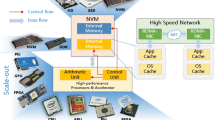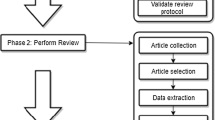Abstract
We propose locking protocols for real-time databases. Our approach has two main motivations: First, locking protocols are widely accepted and used in most database systems. Second, in real-time databases it has been shown that the blocking behavior of transactions in locking protocols results in performance degradation. We use a new relationship between locks called ordered sharing to eliminate blocking that arises in the traditional locking protocols. Ordered, sharing eliminates blocking of read and write operations but may result in delayed termination. Since timeliness and not response time is the crucial factor in real-time databases, our protocols exploit this delay to allow transactions to execute within the slacks of delayed transactions. We compare the performance of the proposed protocols with the two-phase locking protocol for real-time databases. Our experiments indicate that the proposed protocols for real-time databases. Our experiments indicate that the proposed protocols significantly reduce the percentages, of missed deadlines in the system for a variety of workloads.
Similar content being viewed by others
References
Abbott, R. and Garcia-Molina, H. Scheduling real-time transactions: A performance evaluation.Proceedings of the Fourteenth International Conference on Very Large Data Bases, Los Angeles, CA, 1988.
Abbott, R. and Garcia-Molina, H. Scheduling real-time transactions with disk resident data.Proceedings of the Fifteenth International Conference on Very Large Data Bases, Amsterdam, The Netherlands, 1989.
Abbott, R. and Garcia-Molina, H. Scheduling I/O requests with deadlines: A performance evaluation.Proceedings of the Eleventh IEEE Real-Time Systems Symposium, Lake Buena Vista, FL, 1990.
Agrawal, D. and El Abbadi, A. Locks with constrained sharing.Proceedings of the Ninth ACM Symposium on Principles of Database Systems, Nashville, TN, 1990. To appear in theJournal of Computer and System Sciences.
Agrawal, D. and El Abbadi, A. Ordered sharing: A new lock primitive for database systems. Technical Report TRCS 91-18, Department of Computer Science, University of California, Santa Barbara, CA 93106, 1991.
Agrawal, D., El Abbadi, A., and Jeffers, R. An approach to eliminate transaction blocking in locking protocols.Proceedings of the ACM SIGMOD-SIGACT Symposium on Principles of Database Systems, San Diego, CA, 1992.
Agrawal, D., El Abbadi, A., and Lang, A.E. The performance of protocols based on locks with ordered sharing.IEEE Transactions on Knowledge and Data Engineering, 6(4):805–818, 1994.
Agrawal, R., Carey, M.J., and Livny, M., Concurrency control performance modeling: Alternatives and implications.ACM Transactions on Database Systems, 12(4):609–654, 1987a.
Agrawal, R., Carey, M.J., and McVoy, L. The performance of alternative strategies for dealing with deadlocks in database management systems.IEEE Transactions on Software Engineering, 13(2):1348–1363, 1987b.
Alonso, G., Agrawal, D., and El Abbadi, A. Reducing recovery constraints on locking protocols.Proceedings of the 1994 ACM Symposium on Principles of Database Systems, Minneapolis, MN, 1994.
Bayer, R., Heller, H., and Reiser, A. Parallelism and recovery in database systems.ACM Transactions on Database Systems, 5(2):139–156, 1980.
Bernstein, P.A. and Goodman, N. Concurrency control in distributed database systems.ACM Computing Surveys, 13(2):185–221, 1981.
Bernstein, P.A., Hadzilacos, V., and Goodman, N.Concurrency Control and Recovery in Database Systems. Reading, MA: Addison Wesley, 1987.
Bernstein, P.A., Shipman, D.W., and Wong, W.S. Formal aspects of serializability in database concurrency control.IEEE Transactions on Software Engineering, 5(5):203–216, 1979.
Buchmann, A.P., McCarthy, D.R., Hsu, M., and Dayal, U. Time-critical database scheduling: A framework for integrating real-time scheduling and concurrency control.Proceedings of the Fifth IEEE International Conference on Data Engineering, Los Angeles, CA, 1989.
Carey, M.J. Modeling and evaluation of database concurrency control, algorithms. Ph.D. thesis, Electronics Research Library, College of Engineering, University of California, Berkeley, September 1983.
Carey, M.J., Krishnamurthi, S., and Livny, M. Load control for locking: The half-and-half approach.Proceedings of the Ninth ACM Symposium on Principles of Database Systems, Nashville, TN, 1990.
Chan, A., Fox, S., Lin, W.K., Nori, A., and Ries, D.R. The implementation of an integrated concurrency control and recovery scheme.Proceedings of the ACM SIGMOD International Conference on Management of Data, Orlando, FL, 1982.
Eswaran, K.P., Gray, J.N., Lorie, R.A., and Traiger, I.L. The notions of consistency and predicate locks in a database system.Communications of the ACM, 19(11):624–633, 1976.
Gray, J., McJones, P., Blasgen, M., Lindsay, N., Lorie, R., Price, T., Putzolu, F., and Traiger, I. The recovery manager of the system R database manager.ACM Computing Surveys, 13(2), June 1981.
Hadzilacos, V. A theory of reliability in database systems.Journal of the ACM, 35(1):121–145, 1988.
Härder, T. and Reuter, A. Principles of transaction-oriented database recovery.ACM Computing Surveys, 15(4):287–317, 1983.
Haritsa, J., Carey, M.J., and Livny, M. Dynamic real-time optimistic concurrency control.Proceedings of the Eleventh IEEE Real-Time Systems Symposium, Lake Buena Vista, FL, 1990a.
Haritsa, J., Carey, M.J., and Livny, M. On being optimistic about real-time constraints.Proceedings of the Ninth ACM Symposium on Principles of Database Systems, Nashville, TN, 1990b.
Huang, J., Stankovic, J.A., Ramamritham, K., and Towsley, D. Experimental evaluation of real-time optimistic concurrency control schemes.Proceedings of the Seventeenth International Conference on Very Large Data Bases, Barcelona, Spain, 1991.
Huang, J., Stankovic, J.A., Towsley, D., and Ramamritham, K. Experimental evaluation of real-time transaction processing.Proceedings of the Tenth IEEE Real-Time Systems Symposium, Santa Monica, CA, 1989.
Kim, W. and Srivastava, J. Enhancing real-time DBMS performance with multiversion data and priority based disk scheduling.Proceedings of the Twelfth IEEE Real-Time Systems Symposium, Location?, 1991.
Kung, H.T. and Robinson, J.T. On optimistic methods for concurrency control.ACM Transactions on Database Systems, 6(2):213–226, 1981.
Law, A. and Larmey, C.An Introduction to Simulation Using SIMSCRIPT II.5. Los Angeles: CACI, Inc., 1984.
Lin, Y. and Son, S.H. Concurrency control in real-time databases by dynamic adjustment of serialization order.Proceedings of the Eleventh IEEE Real-Time Systems Symposium, Lake Buena Vista, FL, 1990.
Litwin, W. and Shan, M.C. Value dates for concurrency control and transaction management in interoperable systems.Proceedings of the First International Workshop on Interoperability in Multidatabase Systems, Kyoto, Japan, 1991.
Menasce, D. and Nakanishi, T. Optimistic versus pessimistic, concurrency control mechanisms in database management systems.Information Systems, 7(1), 1982.
Mohan, C., Haderle, D., Lindsay, B., Pirahesh, H., and Schwarz, P. ARIES: A transaction recovery method supporting fine-granularity locking and partial rollbacks using write-ahead logging.ACM Transactions on Database Systems, 17(1):94–162, 1992.
Papadimitriou, C.H. The serializability of concurrent database updates.Journal of the ACM, 26(4):631–653, 1979.
Reed, D.P. Naming and synchronization in a decentralized computer system. Technical Report MIT-LCS-TR-205, Massachusetts Institute of Technology, Cambridge, Massachusetts, September, 1978.
Russell, E.C.Building Simulation Models with SIMSCRIPT II. 5. Los Angeles: CACI Inc., 1983.
Russell, E.C.SIMSCRIPT II. 5 Programming Language. Los Angeles: CACI Inc., 1987.
Sha, L., Rajkumar, R. and Lehoczky, P. Priority inheritance protocols: An approach to real-time synchronization.IEEE Transactions on Computers, 39(9):1175–1185, 1990.
Sha, L., Rajkumar, R., Son, S.H., and Chang, C. A real-time locking protocol.IEEE Transactions on Computers 40(7):793–799, 1991.
Stearns, R.E. and Rosenkrantz, D.J. Distributed database concurrency control using before-values.Proceedings of the ACM SIGMOD Conference on the Management of Data, New York, NY, 1981.
Verhofstad, J.S.M. Recovery techniques for database systems.ACM Computing Surveys, 10(2):167–196, 1978.
Author information
Authors and Affiliations
Rights and permissions
About this article
Cite this article
Agrawal, D., El Abbadi, A., Jeffers, R. et al. Ordered shared locks for real-time databases. VLDB Journal 4, 87–126 (1995). https://doi.org/10.1007/BF01232473
Received:
Revised:
Accepted:
Issue Date:
DOI: https://doi.org/10.1007/BF01232473




